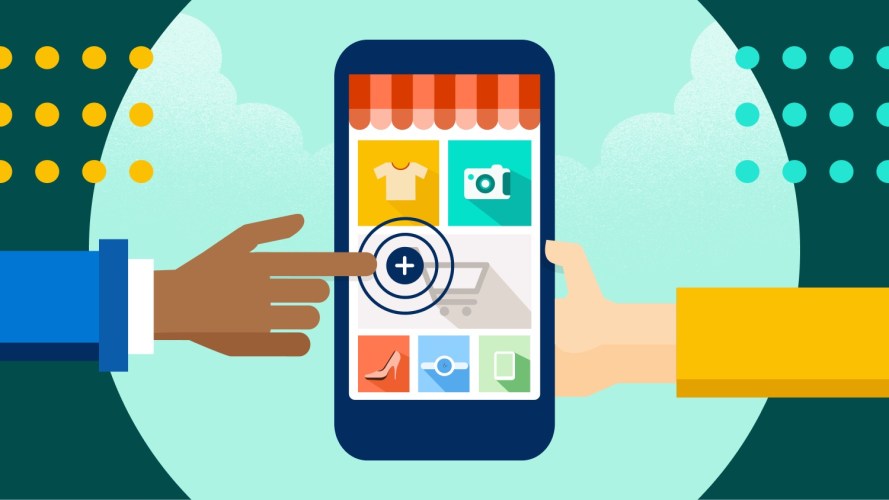3 Ways Generative AI Will Help Marketers Connect With Customers
3 min read




Imagine this: You’re at your favorite burger joint, eagerly anticipating your weekly quarter-pounder. The cashier offers you a tempting choice: “Would you like fries and a soda with that?” Seems like a no-brainer, right?
Here’s the secret sauce: This burger joint has already won your trust with their consistently delicious burgers. By adding a side of crispy, salted fries and an ice-cold cola, they enhance your meal, making it more satisfying. That’s the beauty of effective cross-selling. It increases the customer’s overall satisfaction, while driving up sales.
Here’s how I recommend leveraging this proven sales approach to make existing customers even happier and get you to quota faster.
What is cross-selling?
Benefits of cross-selling
4 cross-selling strategies and techniques
Cross-selling example
Use Sales Cloud to uncover buying signals with AI-powered insights so you can offer the right complementary solutions at the right time.



Cross-selling is a sales strategy where a seller offers complementary products or services to existing customers, delivering more value while increasing revenue. It requires identifying additional customer needs and proposing offerings that meet those needs, increasing satisfaction and boosting sales.
Cross-selling refers to selling complementary products after an initial sale. Upselling refers to selling a more expensive version of a product than a prospect originally envisioned, leaning into additional value and ROI as the main selling points.
In the fast-food example, adding fries and a drink to a burger order is the cross-sell. Upselling, however, would be asking the customer if they want to pay more for a double-patty burger instead of a single-patty burger.
As the burger example above shows, cross-selling enables sales teams to bring in sales quickly, while increasing customer satisfaction. That leads to loyalty and long-term, trust-based relationships. When you have these in place, future sales become easier. Here’s a closer look at the benefits:
While sellers spend considerable time prospecting for new business, it can be a slog. Cold calling alone only yields a conversion rate of about 2% on average. In contrast, cross-selling can increase that number to almost 25%, depending on the channel you use.
Depending on the contract, product, or business model, customers may cancel without notice, causing revenue fluctuations. In some cases, companies may respond to revenue loss by implementing aggressive sales tactics, which could include heavy discounting or increased prospect outreach. However, these tactics, if not carefully managed, can potentially harm the brand’s reputation. On the other hand, regular cross-selling provides an alternative revenue source, allowing companies to maintain financial stability without resorting to price reductions, all while pursuing new customer acquisition strategies.
According to the latest State of Sales report, 80% of sales reps say maintaining customer relationships after the close is increasingly important to forge customer loyalty that can lead to recurring sales and predictable revenue. But cross-selling isn’t just about the bottom line; it’s also about empowering customers with a wider array of solutions. By providing them with complementary products or services that align with their needs, reps can continue to build trust and show they’re interested in helping their customers succeed.
Cross-selling isn’t just about pitching other products in your portfolio. To make sure you’re delivering value to your customer, uncover their motivations and needs in the moment, then match these to products that amplify the impact of past purchases for each customer.
As with any sale, surfacing cross-sell opportunities depends on regular customer interaction and attentive listening. After a sale is complete, be sure to reach out to your customers periodically to ask how the new product is working. This opens the door to new conversations and, ideally, opportunities to cross-sell complementary products.
To cross-sell effectively, treat your customers as people, not cash cows. Demonstrate genuine interest in their success by offering insights, service, and support that earn you the right to suggest relevant cross-selling solutions when the time is right. This might involve proposing revenue-generating ideas, sharing competitor insights, identifying growth opportunities, or suggesting fresh marketing strategies. Also, if a past customer reaches out with a question or issue, respond quickly. This builds rapport and shows you’re interested in them beyond just making a sale.

3 min read

6 min read
Sales pitches often center around stating a new product’s features and price. I’ve heard this too many times: “We have a new product with X amazing features for just $49. Are you interested?” However, the key should be demonstrating how the product will deliver tangible value and make the customer’s life easier. To do this effectively, provide concrete examples of how the solution you’re offering will significantly increase ROI and help them hit their goals.
Buying signals are communication cues signaling a customer’s interest in your product or service. Sometimes, they surface via casual conversations, but they can also surface in buyer behaviors like “add to cart” actions, online reviews, email engagement, pricing or demo inquiries, and inquiries for information or support. Pay close attention to these signals so you can uncover needs and motivations ripe for cross-selling.
Here are a few tactics to get you started:
Cross-selling isn’t limited to burgers and software. It can be valuable in any industry, with any product.
Case in point: As a sales consultant, my clients sometimes need more than a basic training course or hour-long coaching session. Cross-selling books, additional training, or sales resources is almost always an option — and to make sure the door is open for those cross-sells, I continuously deliver valuable articles or insights to build trust. Then, when an opportunity presents itself, I go for the cross-sell.
This happened recently, shortly after the launch of my third book on sales. I had a few clients at the time who showed some interest in additional training for their sales teams, but I didn’t know exactly what they were looking for. So, I asked open-ended questions like, “What industry-specific insights or examples would be helpful?” and “What’s the best learning modality for your team?”
Eventually, I uncovered a good fit: a few clients with smaller sales teams that wanted resources sellers could use on their own time. I confidently proposed a cross-sell in our regular check-in conversations, offering bulk copies of my book at a discounted rate. Happily, they accepted, and many have noted since that the book has made their training more impactful.
Together, we’re building the largest and most successful community of sales professionals. Get deals done, make customers successful, and help your company grow.



The best part about cross-selling: It’s a winning tactic in almost any industry. To ensure success, identify your complementary products and keep them in mind after landing new customers. Also, remember that cross-selling isn’t just about bringing in more revenue. It’s about delivering long-term customer success which builds trust. That’s the golden ticket to easier revenue and quota attainment.

Get the latest articles in your inbox.